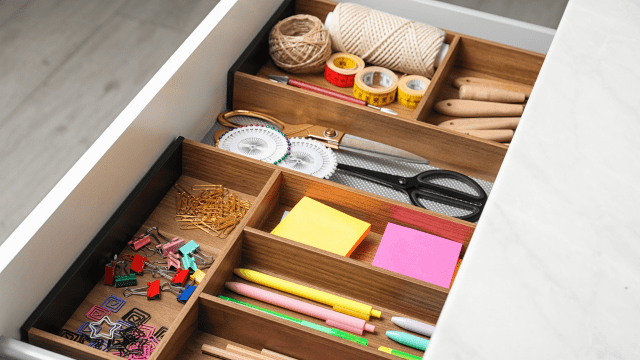Like so much else, decluttering requires you to consider both the theoretical and the practical. Yes, you have to get in there at some point and physically start throwing things away and organizing what you keep, but you also have to do a little work on and with yourself.
Not to sound all woo-woo, but there is an element of visualization and self-knowledge that comes into play. For instance, some of the most popular decluttering methods call on you to visualize your ideal space so when you start actually decluttering, you’re always building toward the creation of that vision. The deep thinking doesn’t end when you get to work, either: You should be intellectualizing your choice of whether to keep or get rid of every single item, too. Try asking yourself just two simple questions about each thing.
The 20/20 rule
This approach, like the “packing party” decluttering method, comes from organizational gurus The Minimalists. It’s called the 20/20 Rule and to use it, you need to ask yourself two easy questions when you’re deciding between keeping or getting rid of an item. It’s especially important when you think you’ve found something you ought to keep around “just in case” you need it some time in the future.
First, ask yourself, “Could I replace this item for less than $US20?” Then, ask yourself, “Could I replace it in less than 20 minutes?”
If the answer to those questions is “yes,” you can afford to get rid of the thing. A good example is, say, a lighter. If you’re not someone who regularly lights candles or smokes, you may never use a lighter, but it’s something that could easily strike you as a “just in case” item. You might rationalize you need it just in case someone comes over with a cigar or just in case you host a birthday party. But realistically, that’s not going to happen. And if it does, the few bucks you spend on another one at the corner store down the street are worth the space you save by getting rid of the original one.
Why this works
If this sounds familiar, it’s because the 20/20 rule isn’t the only example of an easy, two-question quiz you can give yourself when decluttering. When following the “Decluttering at the Speed of Life” method, you are supposed to ask yourself, “If I needed this item, where would I look for it?” If you can’t answer that, you ask yourself, “If I needed this item, would it occur to me that I already own one?” Those “just in case” items you hold onto are usually so infrequently used that you don’t even remember you have them at all, let alone have a specific spot to store them.
For some people (myself included, for transparency) decluttering is hard because of a hangup on these “just in case” items. I can rationalize keeping anything on the basis that I might need it one day, but the truth is I just never do. That’s where the two questions come in: They’re objective, yes-or-no questions that remove the sentimentality and guesswork from deciding whether to keep something. They remove the emotions and provide you with a backup plan (spending less than $US20 without inconveniencing yourself) in the event you ever actually do need something, so you don’t have to get hung up on worries about the future and can just trash the item and move on.

Leave a Reply
You must be logged in to post a comment.